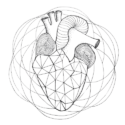Today was a working from home day. A structured morning and a rather haphazard afternoon where my interests were pulled in a million directions. It’s been a while since I had a home-working day and I both really enjoyed the freedom as well as saw how much more difficult it is to get things done when about 5 jobs need attention without one being more urgent than the other. I got quite a few things done and am overall happy with the progress but tonight things are uncertain and I’m realising that I have become much more comfortable with this. The project I had hoped I would mostly structure today is in danger of going back to the drawing board with one of my collaborators thinking of quitting. There’s a deadline in a week and a half and I’m not sure how all this is going to work, I guess time will tell.
Jobs for next month are also piling up and I’m now at capacity, even a little over compared to what I’m completely comfortable with. Even though work is coming from many places and it’s the kind of work I enjoy, there’s still a lot of uncertainty inherent in it. Have I budgeted well time-wise, what about other jobs that also might need doing next month, will I end up paying so much in tax and NI that all this work might not even be worth it? At the moment I am really learning about what my capacity is. What my comfortable maximum looks like, how much time I need to leave for things like book keeping, invoicing, dreaming up new projects, staring in space.
During a bout of catching up with email correspondence I came across this amazing post that completely affected the rest of my day. It’s called Thriving in Uncertainty and talks about the importance of fallow time (time just being) as well as the experience of a supported transiency (a period of time following a great life change) – something that I very much went through albeit on my own rather than within a specific support system. I very much recommend reading the whole article and am going to end with a short extract from it:
Inhabiting uncertainty can be seen as a counterpoint to strategy, which tends to focus on risk assessment and careful adherence to a plan. However, inhabiting uncertainty does not imply indecision, nor does it eliminate the need for planning and analysis. Instead, it offers different types of adaptive, real-time and experiential decision making processes. Knowing what to change and what to keep hold of is key. What is the essence of our work, what are the minimum resources required? What are we doing that could we done with less? How can we manage more? What produces the most joy, the clearest results, the most desirable outcomes? What unsustainable or counter-productive ideas are we clinging to? How do we redesign our practices to make them stronger through adversity? Where else can we look for inspiration? – Thriving in Uncertainty by Maja Kuzmanovic and Nik Gaffney



